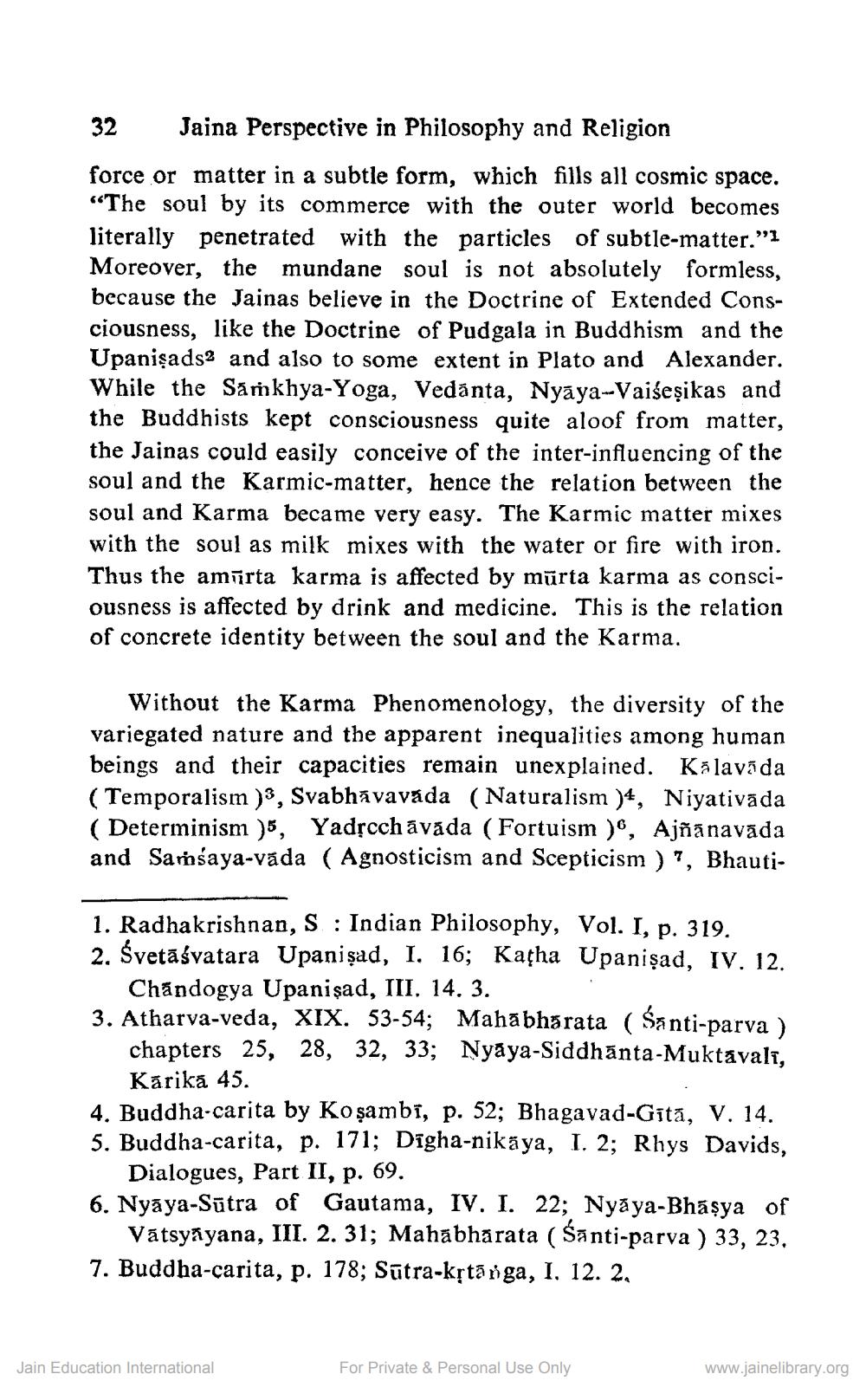________________
32
Jaina Perspective in Philosophy and Religion
force or matter in a subtle form, which fills all cosmic space. “The soul by its commerce with the outer world becomes literally penetrated with the particles of subtle-matter.”'I Moreover, the mundane soul is not absolutely formless, because the Jainas believe in the Doctrine of Extended Consciousness, like the Doctrine of Pudgala in Buddhism and the Upanişads2 and also to some extent in Plato and Alexander. While the Samkhya-Yoga, Vedānta, Nyaya-Vaišeşikas and the Buddhists kept consciousness quite aloof from matter, the Jainas could easily conceive of the inter-influencing of the soul and the Karmic-matter, hence the relation between the soul and Karma became very easy. The Karmic matter mixes with the soul as milk mixes with the water or fire with iron. Thus the amīīta karma is affected by mūrta karma as consciousness is affected by drink and medicine. This is the relation of concrete identity between the soul and the Karma.
Without the Karma Phenomenology, the diversity of the variegated nature and the apparent inequalities among human beings and their capacities remain unexplained. Kā lavāda (Temporalism )3, Svabhāvavada (Naturalism )4, Niyativada ( Determinism )5, Yadệcchávada (Fortuism ), Ajñā navāda and Samsaya-vīda (Agnosticism and Scepticism ) ?, Bhauti
1. Radhakrishnan, S : Indian Philosophy, Vol. I, p. 319. 2. Svetāśvatara Upanișad, I. 16; Katha Upanişad, IV. 12.
Chándogya Upanişad, III, 14. 3. 3. Atharva-veda, XIX. 53-54; Mahabhörata (Santi-parva )
chapters 25, 28, 32, 33; Nyāya-Siddhānta-Muktavali,
Káriká 45. 4. Buddha-carita by Koşambi, p. 52; Bhagavad-Gītā, V. 14. 5. Buddha-carita, p. 171; Dīgha-nikāya, I. 2; Rhys Davids.
Dialogues, Part II, p. 69. 6. Nyāya-Sūtra of Gautama, IV. I. 22; Nyāya-Bhāşya of
Vátsyāyana, III. 2. 31; Mahabharata (Santi-parva ) 33, 23, 7. Buddha-carita, p. 178; Sūtra-kstā nga, I. 12. 2
Jain Education International
For Private & Personal Use Only
www.jainelibrary.org




